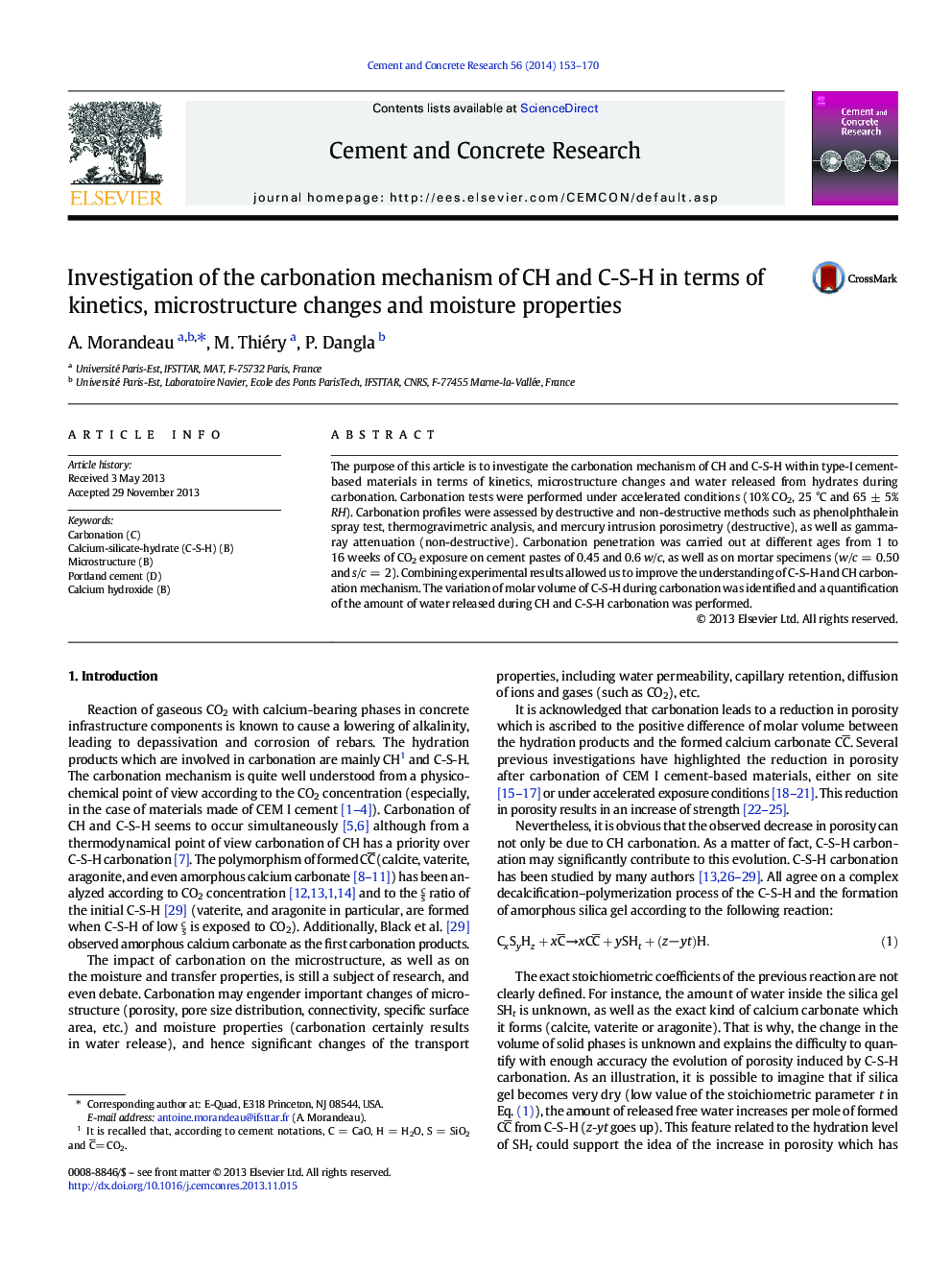| Article ID | Journal | Published Year | Pages | File Type |
|---|---|---|---|---|
| 7885703 | Cement and Concrete Research | 2014 | 18 Pages |
Abstract
The purpose of this article is to investigate the carbonation mechanism of CH and C-S-H within type-I cement-based materials in terms of kinetics, microstructure changes and water released from hydrates during carbonation. Carbonation tests were performed under accelerated conditions (10% CO2, 25 °C and 65 ± 5% RH). Carbonation profiles were assessed by destructive and non-destructive methods such as phenolphthalein spray test, thermogravimetric analysis, and mercury intrusion porosimetry (destructive), as well as gamma-ray attenuation (non-destructive). Carbonation penetration was carried out at different ages from 1 to 16 weeks of CO2 exposure on cement pastes of 0.45 and 0.6 w/c, as well as on mortar specimens (w/c = 0.50 and s/c = 2). Combining experimental results allowed us to improve the understanding of C-S-H and CH carbonation mechanism. The variation of molar volume of C-S-H during carbonation was identified and a quantification of the amount of water released during CH and C-S-H carbonation was performed.
Related Topics
Physical Sciences and Engineering
Engineering
Industrial and Manufacturing Engineering
Authors
A. Morandeau, M. Thiéry, P. Dangla,
